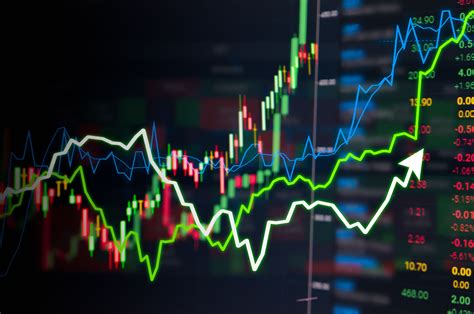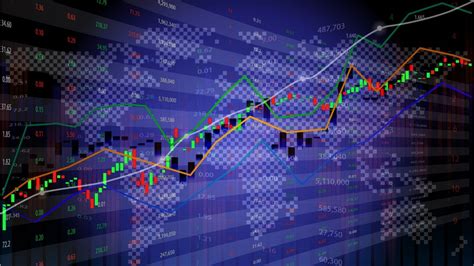Profitable trading in global financial markets requires a deep understanding of price movements, market influences, and strategic execution. Forex trading offers opportunities to generate consistent returns by speculating on currency price fluctuations, but success depends on knowledge, discipline, and risk management. Traders who analyze economic indicators, apply technical strategies, and adapt to changing market conditions can maximize their profit potential. Developing a structured approach ensures better decision-making, reduces unnecessary losses, and enhances long-term profitability.
Fundamentals of Forex Trading
A strong foundation in market structure, price movements, and influencing factors is essential for long-term success. Traders who understand currency pair dynamics, economic indicators, market conditions, and order execution can make informed decisions and optimize profitability. Without this foundational knowledge, even advanced strategies and technical indicators may be ineffective, leading to poor trading outcomes.
1.1 Understanding Currency Pairs and Market Dynamics
Forex trading involves buying one currency while simultaneously selling another. Each pair consists of a base currency and a quote currency, with prices fluctuating based on market supply and demand. Currencies are categorized into three groups based on liquidity and market participation.
Major Pairs: EUR/USD, GBP/USD, USD/JPY, and USD/CHF dominate global transactions, offering high liquidity and low spreads.
Minor Pairs: EUR/GBP, AUD/JPY, and GBP/JPY provide trading opportunities but exhibit slightly wider spreads due to lower trading volumes.
Exotic Pairs: USD/ZAR, EUR/TRY, and USD/SGD experience higher volatility and are often influenced by regional economic conditions.
Liquidity directly impacts trade execution speed and cost. High liquidity ensures minimal slippage, while lower liquidity can lead to erratic price movements. Market volatility fluctuates throughout different trading sessions, with peak activity observed when the London and New York sessions overlap.

1.2 The Role of Economic Indicators in Forex Trading
Currency value fluctuates in response to macroeconomic events and reports. Traders rely on key economic indicators to predict market movements and make informed trading decisions. These indicators reflect a country's economic health, influencing forex market sentiment.
| Economic Indicator | Impact on Forex Trading |
|---|---|
| GDP (Gross Domestic Product) | A rising GDP strengthens a country’s currency by signaling economic growth and investor confidence. |
| Interest Rate | Higher interest rates attract foreign investment, leading to currency appreciation, while lower rates can cause depreciation. |
| Inflation Rate | Moderate inflation supports currency stability, but excessive inflation erodes purchasing power and weakens the currency. |
| Unemployment Rate | A declining unemployment rate suggests economic strength, leading to higher currency demand, whereas rising unemployment signals economic distress. |
| Trade Balance | A surplus (exports > imports) strengthens a currency due to increased foreign demand, while a deficit weakens it. |
Interest rate decisions by central banks, such as the Federal Reserve (USD) or the European Central Bank (EUR), cause significant volatility. Inflation data, consumer price index (CPI), and retail sales reports further influence currency strength, providing traders with critical information for positioning their trades.
1.3 Market Conditions and Their Impact on Trading Strategies
Different market environments dictate the effectiveness of trading strategies. Recognizing these conditions allows traders to adjust tactics accordingly, improving profitability and risk management.
Bull Market: Characterized by rising prices and strong buying momentum. Traders utilize trend-following strategies like moving averages and momentum-based indicators to capitalize on sustained upward trends.
Bear Market: Defined by prolonged price declines, often triggered by economic downturns or geopolitical instability. Short-selling and Fibonacci retracement levels help traders identify potential reversal points.
Sideways Market: Occurs when price action moves within a defined range. Traders employ Bollinger Bands, support and resistance levels, and oscillators like RSI to capitalize on range-bound movements.
Breakout Market: A period of high volatility where prices break past key resistance or support levels. Traders use ATR (Average True Range) to gauge potential breakout strength and avoid false signals.
Volatile Market: Sharp price fluctuations occur due to economic news releases or geopolitical events. Risk management tools like stop loss orders and position sizing become crucial to prevent excessive losses.
Market sentiment shifts due to central bank interventions, monetary policy changes, and unexpected global events. Traders who assess these conditions accurately can align their strategies with the prevailing market environment.

1.4 Order Types and Their Strategic Applications
Executing trades efficiently requires a strong understanding of order types. Selecting the appropriate method based on market conditions, volatility, and trading goals enhances precision and minimizes risk exposure.
Market Order: Executes instantly at the current price. Used when speed is a priority, though slippage may occur in volatile conditions.
Limit Order: Executes at a predetermined price, ensuring better entry points but carrying the risk of non-execution if the price doesn’t reach the set level.
Stop Loss Order: Protects capital by automatically closing a trade at a predefined loss threshold, preventing excessive drawdowns.
Take Profit Order: Locks in gains by closing a trade once a specific profit target is reached, reducing the temptation to hold onto winning positions too long.
Pending Orders: Includes buy stop, sell stop, buy limit, and sell limit orders, allowing traders to automate execution based on market price action.
Comparison of Order Types
| Order Type | Execution Condition | Best Use Case | Risk Considerations |
|---|---|---|---|
| Market Order | Immediate execution at current price | Fast entry/exit in liquid markets | Prone to slippage in volatile conditions |
| Limit Order | Executes only at a specified price or better | Used to control entry price | May not execute if the price doesn’t reach the limit level |
| Stop Loss Order | Activates when price moves against the position | Limits potential losses | Can trigger early exits in volatile swings |
| Take Profit Order | Closes a trade at a predefined profit level | Ensures profits are locked in | Can miss further price movements |
| Pending Orders | Executes once a set price level is reached | Used for breakout or retracement strategies | Market conditions may change before execution |
Traders incorporate order execution strategies into their trading plans to maintain discipline and avoid emotional decision-making. A well-structured approach ensures consistency and reduces the impact of market unpredictability.
Technical Analysis in Forex Trading
Technical analysis provides traders with the tools to interpret market movements and make informed trading decisions. By analyzing price patterns, indicators, and historical trends, traders can anticipate future price behavior and refine their trading strategies. A strong grasp of technical indicators enhances precision in market entry and exit points, helping to navigate forex market volatility effectively.
2.1 Moving Averages and Trend Identification
Moving averages help traders smooth price fluctuations and identify market trends. These indicators calculate the average price over a specific period, providing insights into overall market direction.
Simple Moving Average (SMA): A basic average of past prices over a selected period, effective for long-term trend analysis.
Exponential Moving Average (EMA): Places more weight on recent prices, making it more responsive to short-term price changes.
Bullish and Bearish Trends: A rising moving average signals an uptrend, while a declining one indicates a downtrend.
Moving Average Crossovers: When a short-term moving average crosses above a long-term moving average, it generates a buy signal. Conversely, a downward crossover signals a sell opportunity.
2.2 RSI, MACD, and Momentum-Based Trading Strategies
Momentum indicators help traders gauge the strength of price movements and detect potential trend reversals.
Relative Strength Index (RSI):
Measures the speed and change of price movements on a scale of 0 to 100.
An RSI above 70 suggests overbought conditions, while an RSI below 30 indicates oversold conditions.
Traders use RSI divergences to spot early reversal signals.
MACD (Moving Average Convergence Divergence):
Consists of a MACD line, signal line, and histogram.
A bullish crossover occurs when the MACD line rises above the signal line, suggesting upward momentum.
A bearish crossover signals a potential downtrend.
Stochastic Oscillator:
Compares a closing price to its price range over a selected period.
A reading above 80 indicates overbought conditions, while below 20 suggests oversold conditions.
2.3 Support and Resistance Levels for Trade Execution
Key price levels influence buying and selling decisions, acting as psychological barriers where price reactions frequently occur.
| Support & Resistance Concept | Function in Trading |
|---|---|
| Support Level | A price point where demand is strong enough to prevent further declines. |
| Resistance Level | A price level where selling pressure prevents further upward movement. |
| Pivot Points | Used to identify potential price reversals based on previous market data. |
| Volume Impact | Higher volume near support or resistance strengthens the validity of these levels. |
| Breakout Confirmation | If price breaks through resistance with high volume, it signals a continuation of the trend. |
Traders use these levels to optimize trade entries, placing stop-loss orders below support for buy positions and above resistance for sell trades.
2.4 Fibonacci Retracement and Market Correction Predictions
Fibonacci retracement is a key tool for identifying potential reversal levels after price movements. Traders use Fibonacci levels to determine where the market may find support or resistance before continuing its trend.
Retracement Levels: Key levels include 23.6%, 38.2%, 50%, 61.8%, and 78.6%, marking potential price correction areas.
Confluence with Other Indicators: The accuracy of Fibonacci levels increases when they align with moving averages, support/resistance levels, or trendlines.
Fibonacci Extensions: Used to project potential target levels for price continuation, with common levels being 127.2%, 161.8%, and 261.8%.
Traders use Fibonacci tools alongside volume analysis and candlestick patterns to confirm entry and exit points.
2.5 Bollinger Bands and Volatility-Based Strategies
Bollinger Bands measure market volatility and identify potential breakout opportunities. This indicator consists of a middle band (SMA) and two outer bands representing standard deviations from the mean price.
Squeeze Breakouts: When bands contract, it signals low volatility and the potential for an impending breakout.
Range-Bound Markets: Prices oscillate between the upper and lower bands, offering buying opportunities at the lower band and selling at the upper band.
Volatility Confirmation: Traders use ATR (Average True Range) with Bollinger Bands to validate strong price movements.
Bollinger Bands provide valuable insights into volatility shifts, making them essential for managing risk and timing trade entries.
Trading Strategies for Consistent Profitability
Profitability in forex trading depends on selecting the right approach based on market conditions, risk tolerance, and time commitment. Each strategy is suited for different trading styles, from short-term scalping to long-term position holding. Understanding how to execute these strategies effectively improves decision-making and optimizes returns.

3.1 Scalping: Profiting from Small Market Movements
Scalping involves executing multiple trades within short time frames to capitalize on minor price fluctuations. This method requires precision, speed, and deep market liquidity.
How Scalpers Profit: Small price movements are exploited by entering and exiting trades rapidly. Scalpers rely on tight spreads to maximize efficiency.
Best Currency Pairs: High-liquidity pairs such as EUR/USD, GBP/USD, and USD/JPY offer the best conditions for scalping due to low spreads.
High-Frequency Trading (HFT) Role: Some traders use automated trading systems to execute multiple scalping trades within seconds.
3.2 Day Trading: Capturing Intraday Market Opportunities
Day traders close all positions before the trading session ends, avoiding overnight risks. This strategy relies on technical analysis, price action, and market sentiment.
Price Action Analysis: Identifies key support and resistance levels for intraday trades.
Candlestick Patterns: Recognizing formations like doji, engulfing, and hammer candles helps traders predict short-term price movements.
Risk Management: Limiting leverage and setting stop-loss orders prevent significant losses in volatile markets.
3.3 Swing Trading: Medium-Term Position Holding
Swing traders hold positions for several days to weeks, aiming to profit from short-to-medium-term price movements. This strategy requires a balance between fundamental and technical analysis.
Trend Reversal Identification: Traders use moving averages and RSI to determine when a trend is shifting.
Combining Fundamental & Technical Analysis: Economic data like interest rates and GDP provide context, while technical indicators refine entry points.
Optimal Time Frames: The four-hour, daily, and weekly charts offer the best insights for swing trading opportunities.
Swing Trading vs. Other Strategies
| Strategy | Holding Period | Best for Market Conditions | Risk Level |
|---|---|---|---|
| Scalping | Seconds to minutes | High liquidity, stable spreads | High |
| Day Trading | Hours | Volatile intraday movements | Medium |
| Swing Trading | Days to weeks | Trending and ranging markets | Medium to Low |
| Carry Trade | Weeks to months | Stable interest rate differentials | Low |
3.4 Trend Following and Breakout Trading
This approach focuses on capturing large market movements by trading in the direction of strong trends or breakouts.
Momentum Trading: Traders follow strong trends by using indicators like Moving Averages and MACD.
Breakout Confirmation: Volume and volatility must support a breakout to avoid false signals.
Multi-Timeframe Analysis: Checking different chart timeframes helps validate trend strength and identify optimal entry points.
3.5 Carry Trade: Earning Profit from Interest Differentials
Carry trading involves buying a currency with a high interest rate while selling one with a low interest rate, earning the difference as a profit.
How It Works: Traders earn overnight interest (swap) when the high-yielding currency appreciates.
Risks of Currency Depreciation: Sudden policy changes or economic downturns can negate gains from interest differentials.
Best Currency Pairs: USD/JPY and AUD/USD have historically been favored for carry trades due to interest rate disparities.
3.6 Algorithmic Trading and Automated Systems
Algorithmic trading uses pre-programmed instructions to execute trades at high speeds, minimizing emotional decision-making.
AI-Driven Strategies: Machine learning models analyze market data to optimize trade execution.
Pros & Cons of Trading Bots: While automation increases efficiency, reliance on algorithms introduces risks related to market unpredictability.
Risk Management Integration: Automated systems incorporate stop-loss mechanisms to protect against large losses.
Risk Management for Long-Term Success
Minimizing losses and preserving capital ensures longevity in forex trading. Effective risk management strategies protect traders from excessive drawdowns while maximizing profitability through calculated trade execution.
4.1 Position Sizing and Risk-Reward Optimization
Determining the appropriate trade size is essential for managing risk and maintaining account stability. Traders who implement structured position sizing strategies reduce the likelihood of significant losses.
Trade Size Calculation: A percentage-based approach ensures capital preservation. Most traders risk no more than 1-2% of their total account on a single trade.
Risk-Reward Ratio: A ratio of 1:2 or higher improves profitability by ensuring potential gains outweigh risks.
Consistency in Execution: Adhering to predefined risk management rules prevents emotional trading decisions.
Position Sizing Strategy Comparison
| Method | Risk Level | Best For | Key Considerations |
|---|---|---|---|
| Fixed Percentage | Low | Long-term capital growth | Adjusts trade size based on account balance |
| Fixed Lot Size | Medium | Traders with stable risk tolerance | Ignores account fluctuations |
| Volatility-Based | High | Traders using ATR for stop losses | Requires adjusting trade size for market conditions |
4.2 Leverage, Volatility, and Capital Protection
Leverage amplifies both gains and losses, making it a critical factor in forex trading. While it enhances profit potential, excessive leverage exposes traders to rapid drawdowns.
The Double-Edged Nature of Leverage:
High leverage (e.g., 1:500) increases exposure but magnifies risk.
Low leverage (e.g., 1:10) provides greater capital protection.
Adjusting Trade Exposure in Volatile Markets:
Reducing position size during major economic announcements prevents excessive losses.
Using ATR (Average True Range) helps set stop-loss levels that adapt to volatility.
Managing Drawdowns:
Setting a maximum allowable drawdown (e.g., 10% of total capital) prevents account depletion.
Diversifying trade exposure across currency pairs mitigates single-market risks.

4.3 Hedging and Portfolio Diversification
Hedging strategies minimize risk by balancing positions, while portfolio diversification reduces exposure to market fluctuations.
Hedging with Correlated Currency Pairs:
Holding both EUR/USD and USD/CHF helps neutralize exposure to USD volatility.
Using gold (XAU/USD) as a hedge against inflation-driven currency depreciation.
Long-Term Diversification Strategies:
Investing in multiple forex markets to reduce reliance on a single currency.
Allocating capital to commodities or indices to hedge against forex instability.
Conclusion
Sustained profitability in forex trading is built on a foundation of knowledge, strategy, and risk management. Traders who develop a structured approach by understanding currency pairs, applying technical indicators, and adapting to different market conditions position themselves for long-term success. Economic factors, order execution techniques, and trading methodologies all play critical roles in shaping profitable decisions.
Each step, from analyzing trends to implementing trading strategies, strengthens the ability to navigate volatile conditions while maintaining capital preservation. Mastering trading strategies such as scalping, swing trading, and breakout trading ensures traders can capitalize on various opportunities across different market environments. At the same time, proper risk management, including position sizing, hedging, and controlling leverage, protects against significant drawdowns.
Success in forex markets requires continuous learning, discipline, and adaptability. Those who refine their approach by leveraging economic indicators, executing well-calculated order types, and responding to shifts in market conditions can maximize their profit potential while mitigating risk.
The most traded currency pairs include major pairs such as EUR/USD, GBP/USD, USD/JPY, and USD/CHF due to their liquidity and tight spreads. Exotic and minor pairs can also present opportunities but often carry higher volatility and transaction costs.
Moving Averages help identify trends and reversals.
RSI and MACD indicate momentum and potential entry points.
Fibonacci Retracement helps spot possible retracement levels.
Bollinger Bands assess volatility and breakout potential.
Key economic indicators like GDP, inflation rate, and interest rate directly impact currency valuation. A strong economy typically strengthens a currency, while weaker indicators can lead to depreciation. Central bank policies and employment data also shape long-term forex trends.
Market Orders execute immediately at current prices.
Limit Orders set a specific price for trade execution.
Stop Loss Orders protect against excessive losses.
Take Profit Orders lock in gains at a target price.
Different market conditions influence the effectiveness of a trading strategy. A trending market favors trend-following strategies, while a range-bound market is better suited for range trading. High volatility often benefits breakout trading, whereas a sideways market requires patience and precision.
For new traders, swing trading and day trading offer manageable learning curves with clear risk controls. Trend following strategies based on technical indicators like moving averages can help identify market direction without excessive complexity.
Leverage amplifies both potential profits and losses. While high leverage can increase returns in successful trades, it also exposes traders to greater risks, making risk management crucial. Setting appropriate position sizing and using stop loss orders can help mitigate unnecessary exposure.







